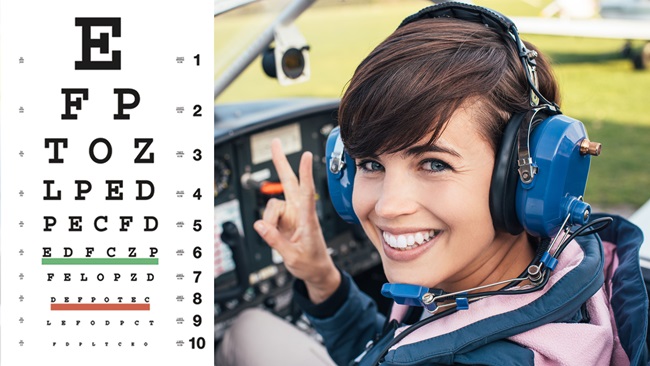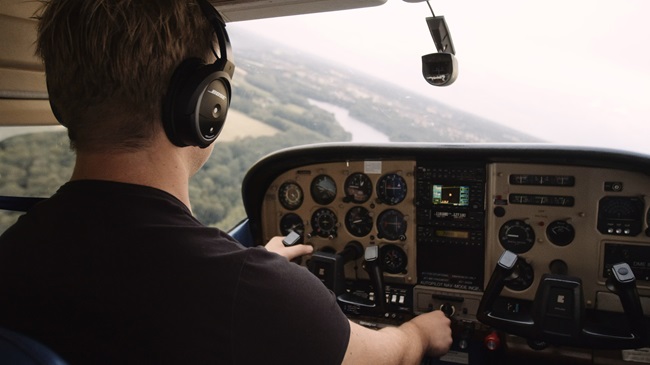AOPA Online Members Only -- AOPA ePilot Custom Content -- Vol. 9, Issue 24

The following stories from the June 15, 2007, edition of AOPA ePilot were provided to AOPA members who expressed an interest in the particular subject areas. Any AOPA member can receive information tailored to their areas of interest by updating their preferences online.
My ePilot – Professional Pilot Interest
CAE OPENS NORTHEAST TRAINING CENTER
CAE SimuFlite on June 7 opened its fourth business aviation training center in Morristown, New Jersey. The $100 million facility now has six simulator bays, but six additional simulators will be installed in the near future. Simulators now in place are for training flight crews in Dassault Falcon Jet models 900EX EASy, 2000EX EASy, and the Sikorsky S-76 helicopter. Soon, the Northeast Training Center will have a Falcon 7X, Gulfstream IV, and a Gulfstream 450/550 simulator. CAE manufactures state-of-the-art, six-degree freedom of motion simulators for a wide range of airline and business jet aircraft. It has sold nearly 700 simulators worldwide in more than 40 nations and operates a total of 24 training centers. The Northeast Training Center joins CAE's other three training centers dedicated to business jets. The others are located in Dallas, Texas; Burgess Hill, United Kingdom; and Dubai.
INDUSTRY CHECK: ARE THE AIRLINES HIRING?
Want to know the employment picture at the airlines? Who's hiring more pilots, the regionals or the "legacy" carriers? The answers are a click away at AOPA's Career Pilot pages, where you'll find a graphic that details the monthly hiring numbers across the country, the year-to-date hiring total, and the previous year's total number. If a professional pilot career is your goal, be sure to visit Career Pilot sections on career development, professional training, industry news, and much more.
My ePilot – Student Interest, Training Tips
FLYING FAQs
Nothing helps a student pilot succeed like high-quality flight instruction and a support network. Whether you depend on that support from fellow students at your flight school, an AOPA Project Pilot Mentor, or some other trusted source of information about flying, having help sure beats going it alone.
This is especially true as you digest the new experiences you'll encounter in flight and when questions arise during ground study as you complete your training program. Every flight you take, and every subject you study, will raise issues on which you'll need further explanation. You read a federal aviation regulation—the definition of a solo cross-country flight, for instance—and find that you need some points clarified. While flying, you hear an exchange on the radio between air traffic control and another pilot, and it contains the unfamiliar phrase "Cleared for the option." What was that about? How can you get more information on V speeds or the definitions of aerodynamic terms? Why do some student pilot certificates expire at the same time as the holder's medical certificates, but not others? These and many other questions arise so routinely that they are addressed in the Frequently Asked Questions section of AOPA's online Pilot Information Center.
The online Pilot Information Center is a must-see resource for a student pilot. You can view the FAQs by category (aeronautical charts, airman information, flight instruction, and weather) or scroll through the questions and answers. Take several of the common questions posed above. Many student pilots are puzzled the first time they hear another aircraft—or their own—cleared "for the option." See the Final Exam discussion in the December 10, 2004, AOPA ePilot Flight Training Edition for the explanation of that clearance. What was that about student pilot certificates and medical certificates having different expiration dates in some cases? Indeed, the two may be issued on the same piece of paper but still have different expiration dates, according to the answer to a question under the Flight Instruction heading, which includes a reference to the relevant regulations.
So give the FAQs a glance. You'll find the answers to many questions, and you'll learn a few new things along the way—guaranteed!
My ePilot – Training Product
'THE COMPLETE PRIVATE PILOT' EXPLORES FLYING FUNDAMENTALS
So you want to learn to fly—or, perhaps, you're already learning to fly, and you have a friend or family member who's caught your flying bug and would like to know more. Bob Gardner's The Complete Private Pilot covers everything involved with becoming a private or recreational pilot, and it will help the aspiring pilot to prepare for the FAA knowledge test and checkride. Gardner is a Gold Seal flight instructor who has been teaching since 1968, as well as an accomplished writer and airshow speaker. The tenth edition of Gardner's book is published by Aviation Supplies and Academics and sells for $24.95. Order it online or call 800/272-2359.
Note: Products listed have not been evaluated by ePilot editors unless otherwise noted. AOPA assumes no responsibility for products or services listed or for claims or actions by manufacturers or vendors.
My ePilot – Student Interest, Final Exam
Question: I am considering using a flight training device to help with my flight training. Can this time be logged toward my pilot certificate?


